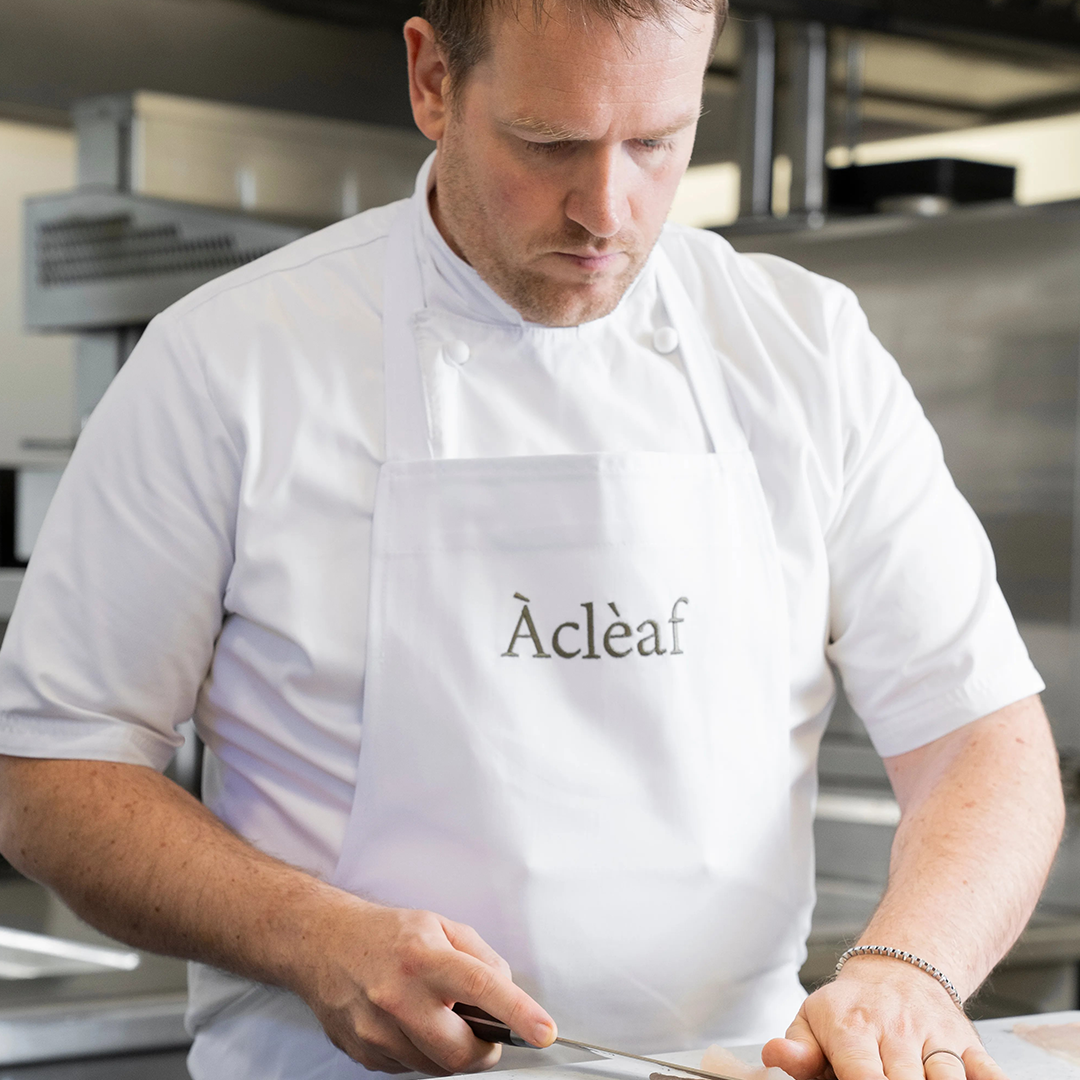Tiny chips are an inevitable result of normal kitchen knife use, even if you’re careful like me. A super sharp knife has such an incredibly thin cutting edge, it is actually very delicate, even if you’re using high quality steel.
Sometimes little bits of the blade are actually bent sideways rather than chipped off. This type of damage can be fixed by using a ceramic honing rod (also called a steel) to straighten the edge again. This process is called ‘honing’.
When tiny bits of the cutting edge actually get chipped off, the only way to fix that is to sharpen the knife by grinding steel away with a coarse whetstone or diamond plate to form a new edge.
If you have a large chip, you’ll need to remove a lot of steel. To do that you either need big arms and a lot of time, or a very coarse / fast stone. An extra coarse diamond plate is the fastest (non-powered) way to do this.

HOW TO REPAIR A BROKEN TIP OF A KNIFE
If you’ve broken off the tip of your knife, you can fix that too. Do not panic. Certainly don't throw the knife away.
CUTTING EDGE METHOD
The most obvious way of repairing the lost tip is to sharpen the knife as normal until a new tip is formed. However, when you grind a lot of steel from your cutting edge, the steel just above the cutting edge becomes thicker. To restore the cutting ability of the knife it’s actually necessary to thin the blade by grinding the entire primary bevel. You lose quite a bit of your knife with this method.
Blade thinning is pretty advanced stuff, so we recommend leaving it to the professionals. Scott, who runs TOG's postal knife sharpening and repair service in Sheffield, UK, can do this for you.
If you’ve broken off the tip of your knife, you can fix that too. Do not panic.

SPINE METHOD
- Draw round the knife to create a paper template.
This is a better method. Grind material off the top (spine) of the blade instead. Here's how:

2. Cut out a paper blade template.

3. Place the template back on the knife, shifted back so the new tip is within the blade. Using a permanent marker, colour in the area of blade still exposed that will be ground off.

4. Turn the knife upside down and grind on a diamond plate until all the black area (and only the black area) has been removed. Make sure you have a nice sharp new tip.

5. Burrs will be created on your new spine profile. Remove these by honing the knife upside down on a ceramic honing rod, or by gently using the diamond plate.

CONCLUSION
I hope that this article has empowered you to be able to do minor repairs to your knives. At TOG we believe strongly in repairing knives wherever possible.
If you don't feel confident doing this yourself, remember we have a postal sharpening and repair service based in Sheffield, UK.
TOG SHARPENING GUIDE

Browse our articles on knife sharpening to learn from scratch or hone your skills.
TOG SHARPENING PRODUCTS

We have created what we believe is the best range of sharpening products possible.




